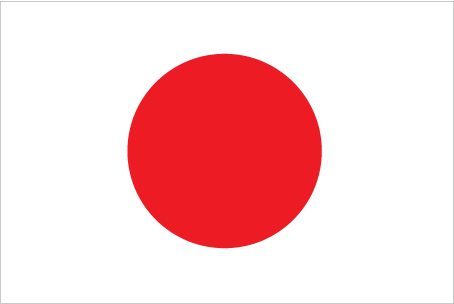To help inspire or plan your trip to Japan, some of its major attractions
for travellers are shown below, including some of the best natural, historical, cultural and adventure sites in the country.
These include all of UNESCO World Heritage Sites for Japan which represent the best
of the world's cultural and natural heritage.
Click on the icons below to focus on specific types of features
(click again to return to all).
|
|
|
|
|
|
|
|
|
|
|
|
 |
|---|---|---|---|---|---|---|---|---|---|---|---|
| Natural | History | Wildlife | Trekking | Cities | Religious Monument | Boat Journey | Rail Journey | Diving | Cultural | Adrenaline | UNESCO WHS |
Religious Monuments in Japan
| Nikko National Park | |
|---|---|
Located north-west of Tokyo, the giant cedar and cypress forests of Nikko have long been a scared site for both Buddhism and Shintoism. The main attraction here are the 17th century shrines and tombs of the Tokugawa shoguns. The Toshogu Shrine is the most opulent temple, housing the mausoleum of the great shogun Ieyasu Tokugawa, as well as the famous ‘three monkeys’ carving that expresses the Zen maxim to 'see no evil, hear no evil, speak no evil'. The surrounding countryside is beautiful and perfect for exploring on foot, including the Chuzenji Lake, Kegon-no-taki waterfalls and the Senjogahara plateau. UNESCO World Heritage Site: Shrines and Temples of Nikko | |
| Ancient Nara | |
|---|---|
Nara was once a great city and the 8th century capital of China. The city included a huge palace complex as well as numerous Buddhist temples and Shinto shrines, many of which have survived intact today. The Todai-ji Great Buddha temple was built in 752 and houses a huge bronze Buddha in the largest wooden structure in the world. Other notable buildings are the Kofuku-ji temple and the Kasuga-Taisha shrine. UNESCO World Heritage Site: Historic Monuments of Ancient Nara | |
| Buddhist Monuments in the Horyu-ji Area | |
|---|---|
The Buddhist monuments of Horyu-Ji date back to the 7th and 8th centuries, shortly after Buddhism's introduction to Japan in the mid-6th century. The 48 monuments are some of the oldest surviving wooden buildings in the world and the earliest Buddhist structures in Japan. These masterpieces of wooden architecture illustrate the adaptation of Chinese Buddhist architecture and layout to Japanese culture and had a big influence on future Japanese religious buildings. UNESCO World Heritage Site: Buddhist Monuments in the Horyu-ji Area | |
| Sacred sites of the Kii Mountains | |
|---|---|
Set in stunning scenery of mountains and dense forests, the scared sites of the Kii mountains - Koya San, Yoshino and Omine and Kumano Sanzan, are ancient sites home to numerous shrines reflecting the fusion of Shinto and Buddhism. The main monastery at Koya San is the centre of the Shingon school of Esoteric Buddhism which was founded in AD 816 by Kobo Daishi, Japan's most revered religious figure. His mausoleum is the most famous tomb of the Okunoin cemetery on Mount Koya, where it is believed he is in a state of catatonic meditation within the mausoleum lying in wait for the future Buddha Maitreya. The ancient Saiganto-ji Shrine of the Kumano sect is located along the cedar-lined Daimonzaka trail and overlooks the thundering wonder of Nachi Waterfall. It has attracted pilgrims here since the 10th century. UNESCO World Heritage Site: Sacred Sites and Pilgrimage Routes in the Kii Mountain Range | |
| Itsukushima / Miyajima Island | |
|---|---|
Itsukushima or Miyajima Island is one of the most scenic places in Japan and has been a holy place of Shintoism for centuries. Itsukushima is famous for its huge scarlet gate or torii that rises out of the waters of the bay. The present shrine on the island dates back to the 12th century and illustrates the Japanese concept of scenic beauty, which combines nature and human creativity. The island is dominated by Mount Misen, which can be climbed on foot or by cable car. The summit has magnificent views over western Honshu and the island-studded Inland Sea as well as a colony of wild monkeys. UNESCO World Heritage Site: Itsukushima Shinto Shrine | |
| Hiraizumi | |
|---|---|
The temples and gardens of Hiraizumi were built in the 11th and 12th centuries when it was the administrative centre of the northern realm of Japan. The five sites, which include the sacred Mount Kinkeisan are based on the cosmology of Pure Land Buddhism, which spread to Japan in the 8th century. This philosophy, unique to Japan, combined Buddhist beliefs and concepts with indigenous Japanese nature worship and Shintoism. UNESCO World Heritage Site: Hiraizumi – Temples, Gardens and Archaeological Sites Representing the Buddhist Pure Land | |


